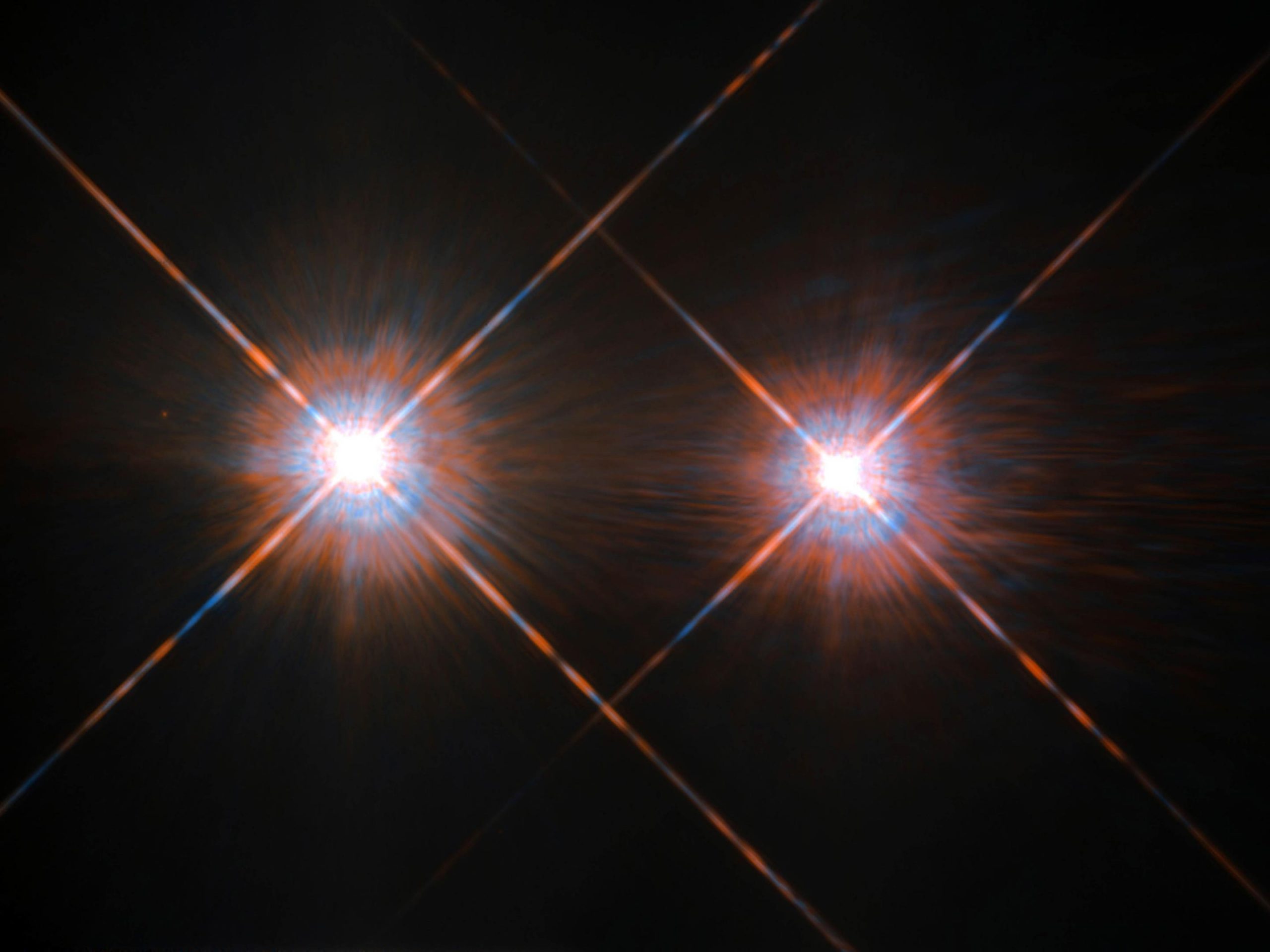

İkili yıldızlar Alpha Centauri A (solda) ve Alpha Centauri B’nin Hubble Uzay Teleskobu tarafından çekilmiş bir görüntüsü. Erboğa takımyıldızında, 4,3 ışıkyılı uzaklıkta yer alan yıldız çifti, Dünya ve Güneş’in ortalama 11 katı uzaklıkta, her 80 yılda bir ortak bir ağırlık merkezinin yörüngesinde dönüyor. Kredi: NASA/ESA/Hubble
Gökbilimciler, yakınlardaki genç, büyük kütleli yıldızları keşfettiler.[{” attribute=””>Milky Way’s black hole are single, not binary, a finding contrary to normal supermassive star formation. The black hole’s extreme environment causes these stellar binaries to merge or disrupt, leading to fewer binary pairs compared to similar stars near Earth. This suggests the black hole’s influence on gravitational waves production and hypervelocity star creation.
- The University of California, Los Angeles (UCLA) and W. M. Keck Observatory scientists analyzed over a decade’s worth of data about 16 young supermassive stars orbiting the supermassive black hole at the center of the Milky Way galaxy.
- Supermassive stars typically are formed in pairs, but the new study found that all 16 of the stars were singletons.
- The findings support a scenario in which the supermassive black hole drives nearby stars to either merge or be disrupted, with one of the pair being ejected from the system.
When supermassive stars are born, they’re almost always paired with a twin, and the two stars normally orbit one another.
But astronomers at UCLA’s Galactic Center Group and the Keck Observatory have analyzed over a decade’s worth of data about 16 young supermassive stars orbiting the supermassive black hole at the center of the Milky Way galaxy. Their findings, published recently in the Astrophysical Journal, reveal a startling conclusion: All of them are singletons.
But why? Are the stars, which are about 10 times larger than our sun, being formed alone in the hostile environment around the black hole? Have their “twins” been kicked out by the black hole? Or have pairs of stars merged to form single stars?
The findings support a scenario in which the central supermassive black hole drives nearby stellar binaries to merge or be disrupted, with one of the pair being ejected from the system.
The stars the scientists observed are known as S-stars, and most of them are young — formed within the past 6 million years — and massive. They are mostly located within a light-month, or a little under 500 billion miles, of the black hole.
“Stars this young shouldn’t even be near the black hole in the first place,” said UCLA postdoctoral scholar Devin Chu, the study’s first author. “They couldn’t have migrated to this region in just 6 million years. But to have a star form in such a hostile environment is surprising.”
Chu and his colleagues used data taken with Keck’s adaptive optics instruments to conduct the first-ever search for spectroscopic binary stars among the S-stars. Spectroscopic binary stars appear through optical telescopes to be single stars but, when the light they emit is analyzed by scientists, are revealed to actually be pairs of stars.
All of the S-stars that appeared to be single were, in fact, alone.
Even more surprising, the researchers found that the number of pairs of S-stars that could possibly exist near the black hole was much lower than the number of comparable stars in the section of space surrounding Earth’s sun, known as the solar neighborhood.
They did this by calculating a metric called the binary fraction, which defines how many stars in a given area could come in pairs; the higher the binary fraction, the more stars that could exist in pairs. Previous studies have shown that the binary fraction for stars similar to S-stars in Earth’s solar neighborhood is around 70%. In the new study, the researchers found that near the Milky Way’s black hole, the upper limit is just 47% —suggesting that the extreme environment of the black hole is limiting the survival of stellar binaries.
“This difference speaks to the incredibly interesting environment of the center of our galaxy; we’re not dealing with a normal environment here,” Chu said. “This also suggests that the black hole drives these nearby binary stars to merge or be disrupted, which has important implications for the production of gravitational waves and hypervelocity stars ejected from the galactic center.”
The UCLA researchers now plan to explore how the limit on the binary fraction they calculated compares to the binary fraction for similar stars that are located farther from the black hole, but still within its gravitational influence.
Reference: “Evidence of a Decreased Binary Fraction for Massive Stars within 20 milliparsecs of the Supermassive Black Hole at the Galactic Center” by Devin S. Chu, Tuan Do, Andrea Ghez, Abhimat K. Gautam, Anna Ciurlo, Kelly Kosmo O’neil, Matthew W. Hosek Jr., Aurélien Hees, Smadar Naoz, Shoko Sakai, Jessica R. Lu, Zhuo Chen, Rory O. Bentley, Eric E. Becklin and Keith Matthews, 11 May 2023, Astrophysical Journal.
DOI: 10.3847/1538-4357/acc93e

“Analist. Tutkulu zombi gurusu. Twitter uygulayıcısı. İnternet fanatiği. Dost pastırma hayranı.”





More Stories
Bilim insanları dünyadaki en büyük demir cevheri yataklarında milyar yıllık bir sırrı keşfetti
Fosillere göre tarih öncesi deniz ineği, timsah ve köpekbalığı tarafından yenildi
Büyük bir bindirme fayı üzerine yapılan yeni araştırma, bir sonraki büyük depremin yakın olabileceğini gösteriyor